By Jon Latimer
World War II had been in progress for six weeks when on the evening of October 12, 1939, the German submarine U-47 surfaced off the Orkney Islands at the northern tip of Scotland. While the officers standing in the conning tower observed the twinkling lights ashore to the west, only the captain, Kapitänleutnant Günther Prien, knew the purpose of their mission. Security surrounding it had been so tight that only now, with the climax approaching, would it be possible to tell his men the reason for so daring a foray into enemy waters.
Following a night of observation, U-47 submerged and withdrew eastward. As it settled on the bottom, the motors were cut and Prien ordered the crew to assemble in the forward mess. The time had come to reveal to these young men—average age of 20—that the following day, they would be entering Scapa Flow.
A Symbolic Mission
Scapa Flow had a special significance to the officers and men of Germany’s Kriegsmarine. It was at Scapa Flow that the pride of Germany during World War I, the High Seas Fleet, with which it had sought to challenge the Royal Navy for control of the seas, had been scuttled, laid to rest in a final defiant act following the defeat of its armies in northern France and Flanders. There, its ships lay as they still do, in 15 fathoms of water. The superb natural harbor provided ample protection for large numbers of British warships and a perfect position from which to intercept German vessels attempting to escape into the North Atlantic. Prien was proposing an extraordinary act.
The German Navy was very much the least favored of the three services at the outbreak of the war. The glory went to the Army and in its support, the Luftwaffe, as they sliced through Poland in a few short weeks. The mind-set of Hitler’s high command was geared to fighting battles on the continental landmass, and little imagination was applied to the problems faced by naval forces. Nor were the consequences, either tactical or strategic, considered of an enemy whose principal strength was naval.
The importance of the U-boat arm was overlooked in favor of large surface units such as the battleships Bismarck and Tirpitz. Kommodore Karl Dönitz, the head of the U-boat arm, desperately wanted a major success to impress upon Hitler the importance of developing the U-boat program. While serving as a U-boat commander in World War I, Dönitz had himself slipped his boat into a defended harbor in Sicily and gotten out again without detection. If such a feat could be repeated, it could prove a calamitous blow for the Royal Navy in both materiel and prestige, and equally glorious proof of the value of his submarines.
Dönitz had been appointed commander of the new Nazi submarine fleet in September 1935, during the years of appeasement when the British unilaterally gave the Germans the go-ahead to start building submarines once again via a naval treaty. The Germans had been prevented from doing this as part of the settlement of World War I, but they had maintained their skills through antisubmarine warfare training. A thoughtful and far-sighted commander who knew that Britain could not be defeated by a few isolated successes by powerful submarines, Dönitz was desperately keen to ensure he had the wherewithal to conduct a protracted campaign with a substantial fleet that could wear down the British through sustained and heavy attrition. He wanted the ability to sweep an area of sea and then concentrate for night attacks, and for this he needed quantities of relatively simple boats. The Type VII boats, such as U-47, were perfectly suited to his requirements.
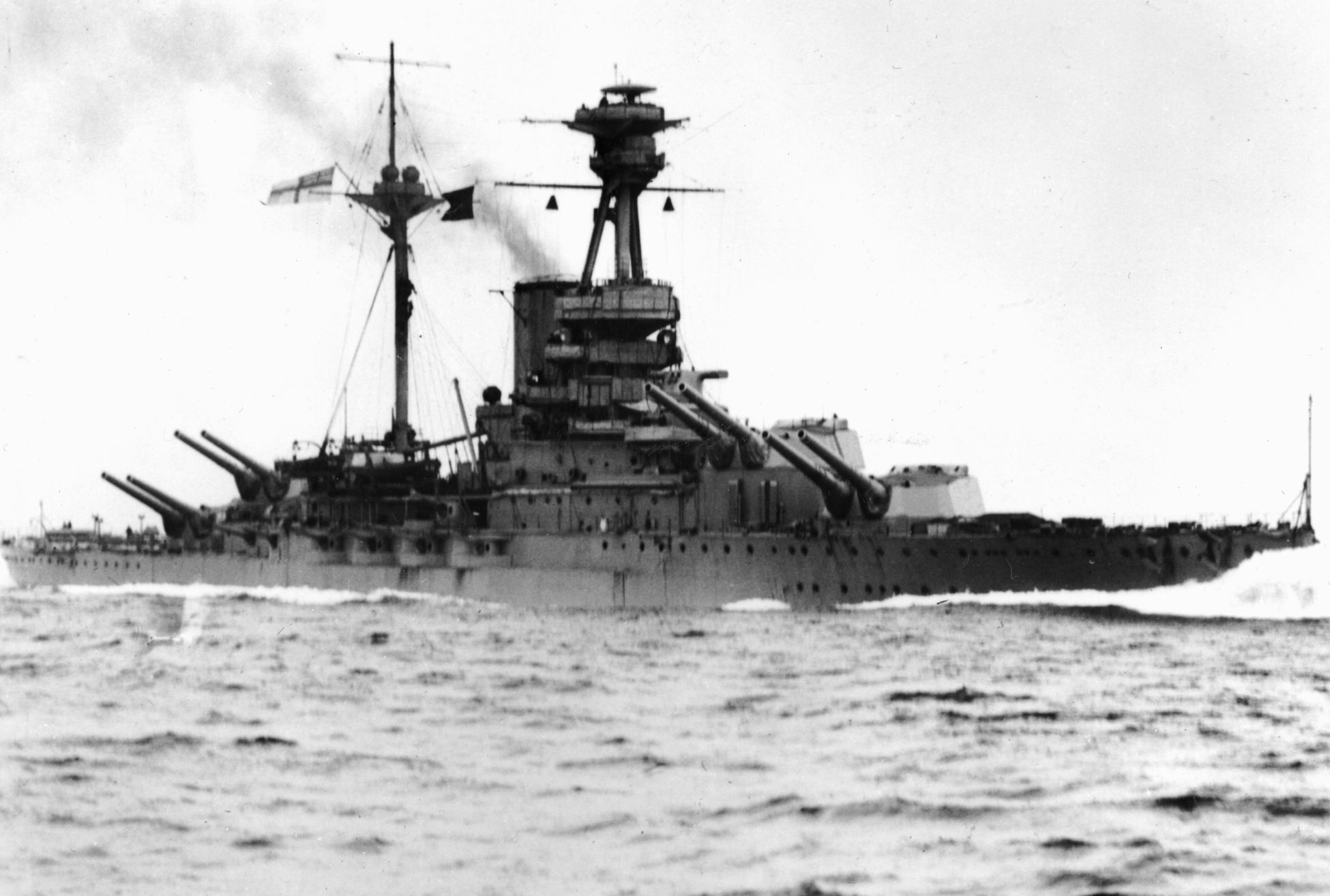
“Get Your Boat Ready”
To have even the most remote chance of success in Scapa Flow, Dönitz needed intelligence. U-16 was sent to reconnoiter the waters, tides, and currents while all available charts were collected together with aerial photographs. Close examination of these suggested that Scapa Flow was not as well defended as they had expected. The antisubmarine booms and sunken blockships had been sufficient during World War I when two German submarines were lost attempting similar operations, but gaps were now apparent and the traditional defenses no longer offered complete protection to the anchorage. The best route was through Holm Sound, which divided into a number of smaller channels, one of which, Kirk Sound, was incompletely defended by blockships. If the timing was right, at slack water on a dark night, a surfaced boat could slip through the gap. It was a dangerous undertaking, but not an impossible one.
The commander of such a raid would need to be a first-class seaman with no lack of raw courage. Dönitz chose the 31-year-old Prien, a fervent Nazi and a relative newcomer to the service. Born in 1908 in Leipzig and brought up in great poverty, he was inspired as a boy by the Portuguese explorer Vasco de Gama. Prien first went to sea at age 16 and moved up from cabin boy to merchant captain before the Depression threw him out of work. The expansion of the Navy as Germany began its rearmament program enabled him to return to sea, and there he immediately shone as a natural U-boat commander.
Prien possessed the “sixth-sense” needed for such work, together with a common touch that made him both liked and respected by his men. To Dönitz, “Prienchen” was the ideal skipper for this special task: he had scored the U-boats’ first official victory (not counting the liner Athenia, sunk on the first day of the war—even the Nazis denied that publicly). He had sunk three ships totaling over 66,000 tons on his first war patrol and won the Iron Cross, Second Class.
Standing before Dönitz in the Weichsel, Prien glanced at the charts on the table and saw the map of Scapa Flow on top. He could barely contain himself as Dönitz outlined his “Special Operation P.” Finally, Dönitz asked, “Do you think a determined commander could get his boat inside Scapa Flow and attack the enemy’s forces lying there?” He gave Prien 48 hours to look over the accumulated charts, photos, and intelligence and deliver a carefully thought-out assessment.
After supper at home, Prien sent his wife and young child out for the evening and spread the documents on his writing table. Dönitz had been planning the venture for some time, and there was a wealth of intelligence. Aerial photos taken as early as September 6 showed the entire Home Fleet at anchor and antisubmarine booms and sunken ships blocking the bay’s seven entrances. A U-boat scouting the inlets had found scant defenses but 10-knot rip tides. Navigation, even in daylight, would be tricky at best. But in Kirk Sound, the northernmost of the Flow’s three eastern inlets, the blockships Thames, Soriano, and Minich lay just far enough apart that a U-boat might zigzag through in the slack water just after high tide.
The tide on the night of October 13 would be one of the highest that year, and there would be no moon. “I worked through the whole thing like a mathematical problem,” Prien related in his autobiography, Mein Weg Nach Scapa Flow (My Way to Scapa Flow—most recently published by Tempus as U-Boat Commander). The next day he reported ahead of deadline. Dönitz was at his desk. “He did not acknowledge my salute; it seemed as if he hadn’t noticed it. He was looking at me fixedly and asked, ‘Yes or no?’”
Prien answered, “Yes, sir.”
“Very well,” said Dönitz as he came around to shake Prien’s hand. “Get your boat ready.”
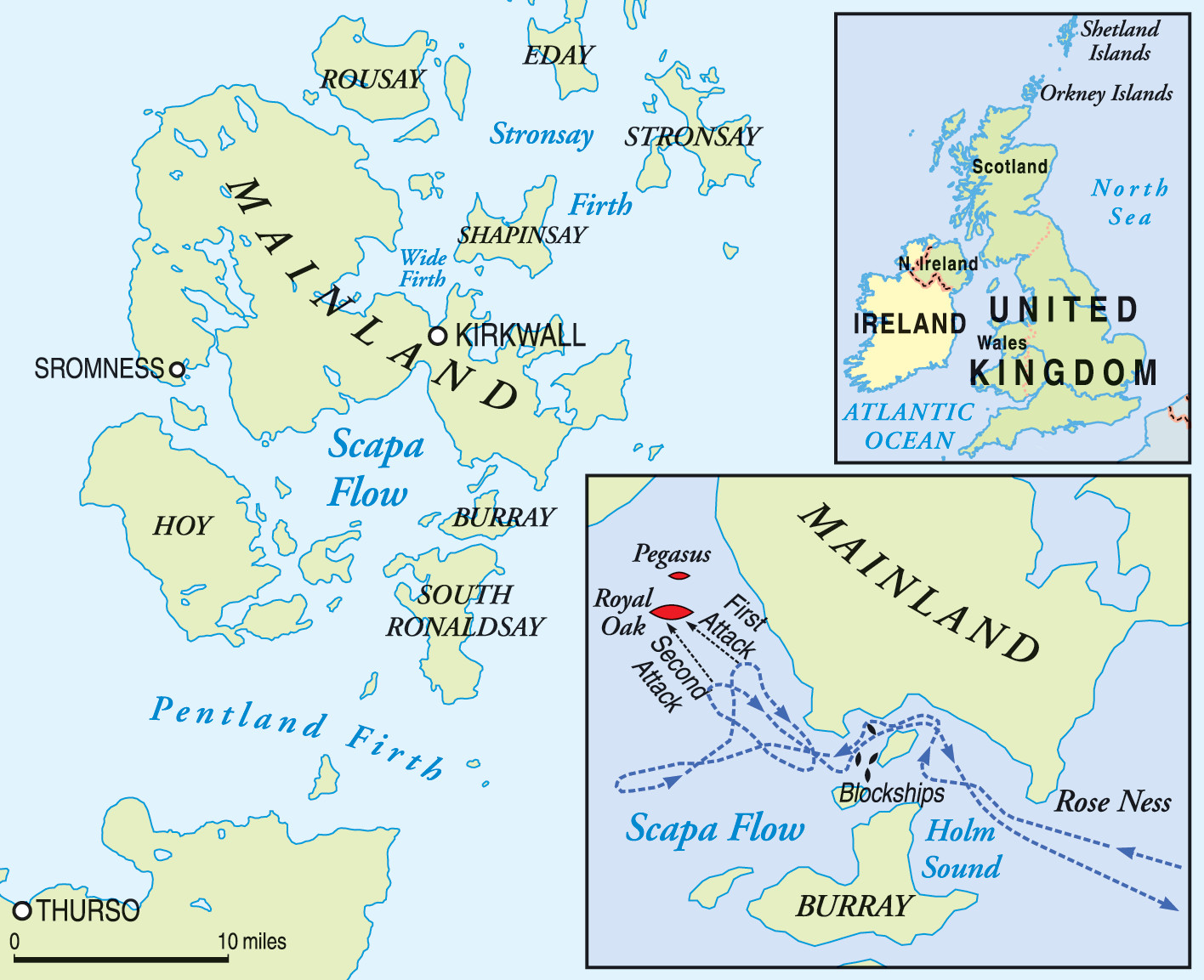
An Elite Crew, an Advanced Ship
The crew selected for this mission were all hand-picked volunteers, already proven in their ability to handle the extreme pressure of submarine warfare. Oberleutnant zur See Englebert “Bertl” Endrass, the first officer, would later become a U-boat ace in his own right in U-46 and U-567. Oberleutnant zur See Amelung von Varendorff, the second officer, would captain U-213, and the other 42 men of crew were all volunteers, products of the grueling U-boat school that required 66 simulated attacks on the surface and 66 more submerged before the firing of a single torpedo. On October 8, U-47 was ready to set sail from Kiel.
Passing through the Kiel Canal and entering the North Sea, the Germans headed for Heligoland for final trim trials. The Type VIIB U-boat was the most advanced model in the German Navy at the time, although it was not strictly a submarine in the modern sense and was capable of only short distances under water at low speed. U-boats normally traveled on the surface unless attacked by aircraft or surface vessels. Attacks would be delivered on the surface if possible, unless against well-defended convoys. These boats were armed with 15 torpedoes with four bow-firing tubes and one at the stern. U-47 was also armed with an 88mm deck gun and a 20mm antiaircraft gun.
“The Old Man Never Sleeps”
Security was essential to Prien’s mission, so U-47 remained submerged during daylight and traveled on the surface at night. The daily routine was reversed, and breakfast was taken in the evening. Crossing the shallow waters of the North Sea occurred without incident, and the sighting of the Orkneys on the 12th meant the end of their ocean journey. Now Prien could inform his crew of the daring plan. Afterward, he dismissed them to their bunks for a few hours of sleep prior to the rigors to be faced. The lights were extinguished. The only noise was the whisper of the control room watch, the drip of condensation off the pipes, and the occasional gurgle of the water, just a few feet away, pressing in on all sides.
Prien could not sleep and finally got up and went to the wardroom, where he found navigator Wilhelm Spahr poring over the illuminated map table on which was spread the chart of Scapa Flow. For what no doubt seemed a long time, they stood there together, contemplating the chart. Finally, Spahr said, “Do you believe, sir, that we can get in?”
“Do you think that I am a prophet, Spahr?” Prien retorted.
“And suppose it goes wrong?”
“Well, then, we will have had very bad luck.”
About this time, Endrass peered out from his bunk. “I can’t sleep anymore, sir, and you can court martial me if you like.”
“Shut up and save the air.”
Prien went back to his bunk. Presently somebody stumbled past. The radio operator across the passageway snarled, “Quiet! The old man’s sleeping.”
“The Old Man never sleeps,” answered Prien from the shadows. “He just rests his eyes.”
At 4 pm, the thick stench of diesel fuel and unwashed bodies was thinned by the smell of the finest feast the Kriegsmarine could provide. Walz, the ship’s cook, had outdone himself—soup, veal cutlets, pork ribs and gravy, potatoes and green cabbage, and strong coffee to wash it down; a “hangman’s dinner” the men called it. Then the table was cleared, and Prien recalled, “Once more I went through the boat and gave my instructions. During the whole of the action, no one was to smoke, and even more important, no one was to speak unnecessarily. Everyone inspected his lifejacket. I cast a glance at the escape hatch; the navigator fixed his chart.” The torpedoes were armed and prepared for firing and charges placed should it be deemed necessary to scuttle the boat.
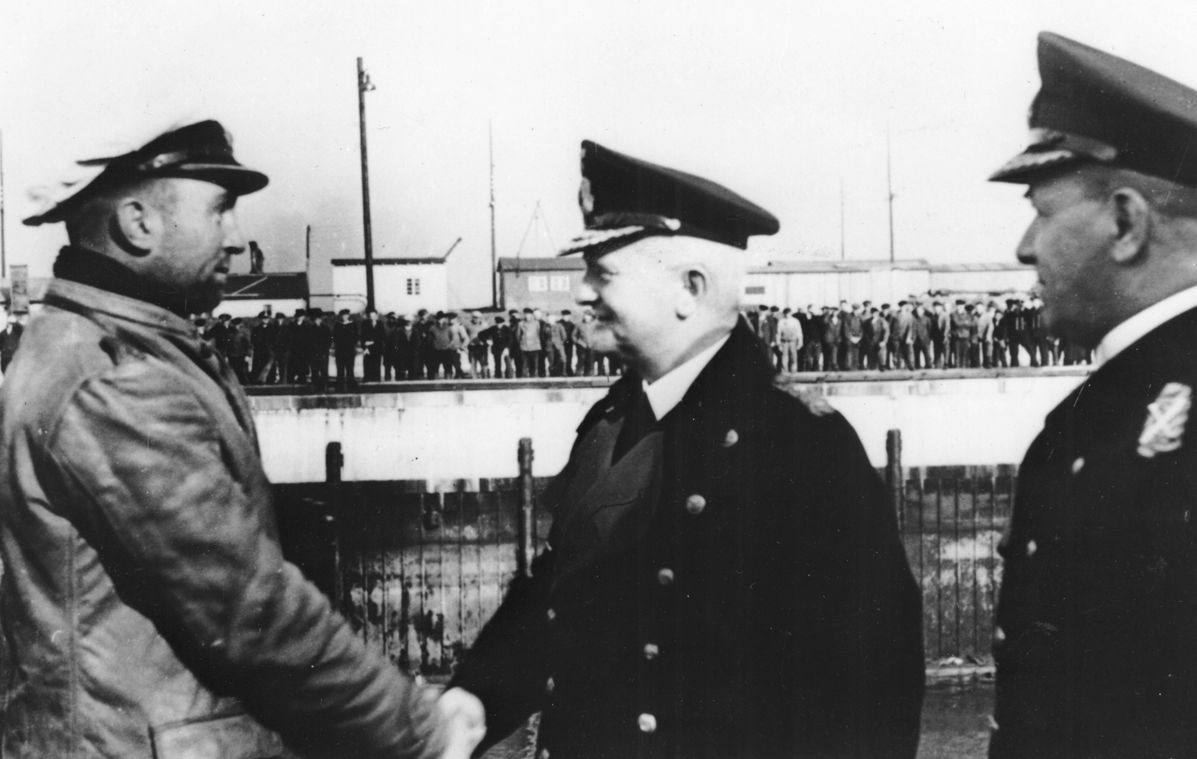
Entering Scapa Flow
At 7 pm, the electric motors were started up and U-47 surfaced slowly before the diesel engines were switched on. Prien, two watch officers, and the boatswain emerged onto the conning tower to find that the night was not especially dark and the northern lights cast a glow across Scapa Flow and its approaches, making the U-boat considerably more visible than he would like. He considered aborting the mission, but his men’s morale was high and a postponement would achieve nothing, so he decided to press on.
A merchant ship was spotted off Rose Ness, forcing a crash dive for 30 minutes until, at 11:31 pm, U-47 resurfaced and entered Holm Sound. With the shapes of the low coastal hills outlined in the pale orange and blue glow of the flickering sky lights, disaster was close at hand. The missed sighting of a blockship almost led to entering the impassable Skerny Sound, but the navigator corrected the error. Passing through Kirk Sound, the boat grated against the cable of another blockship and was momentarily grounded. Quickly, Prien ordered the opening of the air pressure valves and the flooded dive tanks to be blown. Trembling in the water, U-47 shook herself free and into Scapa Flow.
Carefully edging past the village of St. Mary’s, the boat was illuminated in the headlights of a car, to the horror of the little group on the conning tower. But no alarm was raised, and the crew sailed on to look for targets. Having entered Scapa Flow shortly before midnight, U-47 had traveled over three nautical miles westward and seen nothing. Fearing that to travel any further westward would leave them vulnerable to patrols in Hoxa Sound and with increasing desperation, Prien first ordered a 180-degree turn followed by a turn to port to head northward. However, nothing could be seen. The expected mass of battleships, cruisers, and destroyers of the British Home Fleet was no longer in the position given in aerial photographs of a week before.
Four Hits on the Royal Oak
The main body were now anchored at Loch Ewe on the northwest coast of Scotland, following a vain pursuit of a German sortie into the North Sea led by the battlecruiser Gneisenau. The aging battleship HMS Royal Oak had returned to Scapa Flow, unable to maintain contact with the fleet in the force 9 gales they had been fighting. Now her bulk loomed up before Prien, who correctly identified her class.
Commissioned in 1916, Royal Oak was a Royal Sovereign-class battleship armed with eight 15-inch and 12 6-inch guns. With her displacement of 31,250 tons, she made an impressive sight, although strictly speaking she was now a second-line battleship. Behind her, Prien thought he saw the battlecruiser HMS Repulse, but in this he was mistaken; it was the 6,900 ton seaplane tender Pegasus. Torpedoes were loaded into the tubes, and Prien ordered a salvo to be fired, but one of the four forward tubes jammed. The remainder were away—two at Royal Oak and one at Repulse (Pegasus).
The electrically powered weapons took fully three and a half minutes to cover the 3,000-meter range until at 1:04 am, a hit was made on the bow of the Royal Oak. Although the explosion was felt throughout the large ship, it caused amazingly little reaction. Nearly the entire crew was asleep, including visiting Admiral H.E.C. Blagrove, commander of the Second Battle Squadron. Few of the men were much disturbed by the first dull bang. Captain W.G. Benn believed it was an internal explosion in the paint store, or perhaps an aerial bomb. Nobody could imagine they might be under attack from a submarine. Most of the 1,200-man crew, getting no duty call, went back to bed. Several, however, reported air venting under high pressure. Royal Oak was taking on water.
The hit was acknowledged on U-47, although Prien thought he had hit Repulse. Afraid of detection, the U-boat turned around to reload her torpedo tubes and fired from the stern as it did so. This shot went wide. A second salvo of three was released about 12 minutes after the first. The first torpedo hit the starboard side under B gun turret and sent up a huge cloud of spray. Shortly afterward, the other two also struck the starboard side and the battleship lifted before settling and beginning to list to starboard. Tons of water leaped the height of Royal Oak’s mast; black smoke gushed from the colossal hole amidships. Her lights went out, and she immediately began to heel over.
“Flames shot skyward, blue … yellow … red,” recalled Prien. “Like huge birds, black shadows soared through the flames, fell hissing and splashing into the water … huge fragments of the mast and funnels.”

Royal Oak Sinks, U-47 Slips Away
On board there was total chaos. Royal Oak had taken a hit in an aft magazine, and with the power out the only light came from blazing cordite searing through her vents. “Like looking into the muzzle of a blow lamp,” was how one Royal Marine put it. The eerie light illuminated a hellish scene of screaming, horribly burned men stumbling about like lost souls in the flickering maze. The crew staggered blindly in the dark, many trapped by the fires that had started and others by the power-operated hatches now jammed shut.
The starboard list steadily increased until some 10 minutes after the second salvo hit; another set of explosions turned the ship over and Royal Oak went down. Captain Benn was one of the lucky ones and was blown overboard. At the board of inquiry 10 days later, it was found that “he remained in the ship until the last possible moment, until in fact the ship left him.” The time was 1:33 am, and 833 of the 1,200 men aboard the battleship had perished with it.
Meanwhile, U-47 was turning away to make good her escape. She was forced to claw her way back to Kirk Sound against the current, and Prien decided not to leave the way he had come in, but to use the deeper though tighter channel to the south. This the helmsman managed with great skill, negotiating the blockship and guiding U-47 out into Holm Sound.
The U-47 cleared Rose Ness Point at 2:15 am and headed into the North Sea. A crate of beer was produced, and the crew began to celebrate a most daring feat of arms. They had sailed right into the heart of the enemy’s lair and sunk a major warship. On their return journey, the Germans had a run-in with some British minesweepers, which forced U-47 to crash dive. The minesweepers dropped depth charges on U-47. The U-boat evaded them and escaped unscathed to reach Wilhelmshaven two days later. On October 15, an old steamer arrived in the wreckage-strewn Flow in order to be sunk as a blockship in Kirk Sound—as a result of a decision by the Admiralty on July 10, 1939, to close the gap.
A Hero’s Welcome
When U-47 arrived back at its home base at 11 am, the German naval authorities were already aware of the sinking, and the crew was granted a hero’s welcome. Grand Admiral Erich Räder, chief of the Kriegsmarine, was there with Dönitz to award the entire crew the Iron Cross, Second Class. William L. Shirer, the CBS correspondent in Berlin, later met Prien, who “came tripping into our afternoon press conference at the Propaganda Ministry this afternoon, followed by his crew—boys of eighteen, nineteen, twenty. Prien is thirty, clean-cut, cocky, a fanatical Nazi, and obviously capable. Introduced by Hitler’s press chief, Dr. Dietrich, who kept cursing the English and calling Churchill a liar, Prien told us little of how he did it. He said he had no trouble getting past the boom protecting the bay. I got the impression, though he said nothing to justify it, that he must have followed a British craft, perhaps a minesweeper, into the base. British negligence must have been something terrific.”
Dönitz was promoted to rear admiral, and Prien was to receive the Knight’s Cross from the Führer himself.
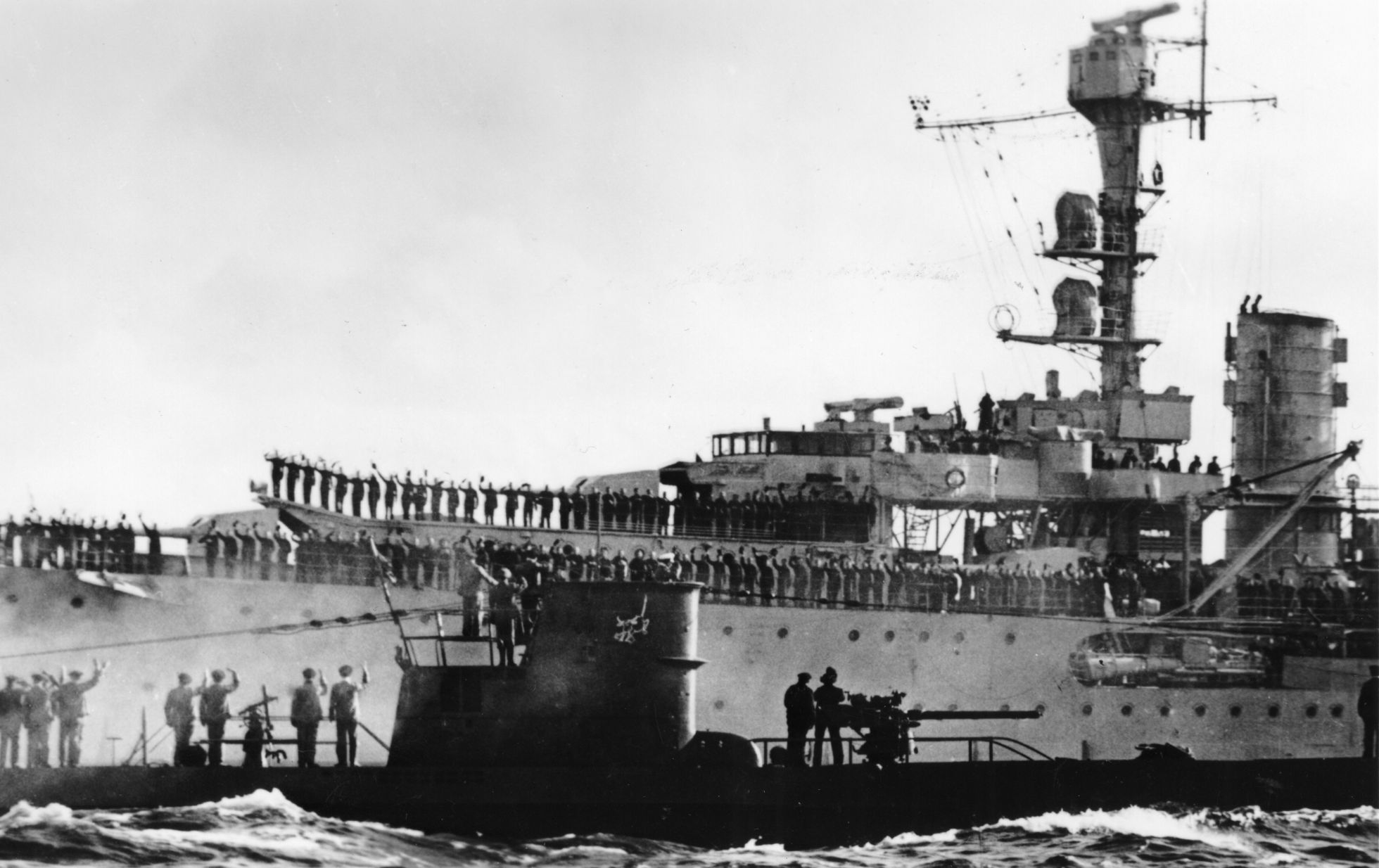
For the British, the Scapa Flow scandal ended several naval careers. In the entire war, only one other British battleship—HMS Barham—was sunk by a U-boat. After U-331 torpedoed the Barham, it and the liner Empress of Britain were the only U-boat victims larger than Royal Oak. Churchill, as First Lord of the Admiralty, escaped only because he was new on the job. The Royal Navy was forced to resort to other anchorages, which the Germans quickly mined. The battleship HMS Nelson and the cruiser HMS Belfast were damaged and four other vessels sunk, all due in no small part, at least indirectly, to U-47.
Dönitz now had the proof he needed of the war-winning potential of his submarines and the need for an expansion of the U-boat building program. However, the strategic shortcomings of Hitler’s war machine meant that it was already too late, and despite considerable success to come the Germans simply would not be able to produce boats quickly enough nor, in the end, match Allied technological superiority.
Avenging the Royal Oak
Over 600 of the Type VII boats such as U-47 were eventually produced, and most were eventually sunk. Prien himself would have little time to savor his triumph. He continued for a another 18 months and proved that he was one of the best German commanders. On his sixth patrol in June 1940, he sank eight ships for a total of 51,483 tons. In convoy battles Prien often was the first who found the convoys and vectored in other boats. He enjoyed considerable success, sinking 28 ships with a combined tonnage of 160,939.
The Royal Navy, however, would have its revenge when U-47 was lost in March 1941. This victory has always been attributed to the British destroyer HMS Wolverine, but new data suggest that the destroyer was actually attacking Hans Eckermann’s U-A, which had to withdraw from the battle with heavy damage. It is now speculated that U-47 may have been hit by one of her own circling torpedoes.
Certainly the U-boat went down with all hands, including Prien and seven other members of the original Scapa Flow crew. Indeed, only 15 of the 44 submariners involved in the sinking of the Royal Oak were to survive the war, a testament to the appalling losses the U-boats suffered as a whole. The youngest member of the crew, torpedo mechanic Herbert Herrmann, eventually married a Scottish woman and settled in Dumfriesshire.
In Britain itself, rumors persisted throughout the war that the German boat had been guided into Scapa Flow by a traitor, and that the car headlights that had so scared the submariners were in fact a secret signal. Only when the war ended did it become apparent that the Germans’ main source of information had been aerial photographs.
Today, the Royal Oak lies on her starboard side in about 60 feet of water and is a registered war grave. Recently there have been difficulties with the fuel oil in her tanks beginning to seep out, threatening to cause a major environmental problem as the hull begins to deteriorate. The German High Seas Fleet, however, remains a major attraction for scuba divers.
Jon Latimer is the author of several books on World War II. His most recent work is Burma: The Forgotten War. He lives, writes, and teaches in Great Britain.
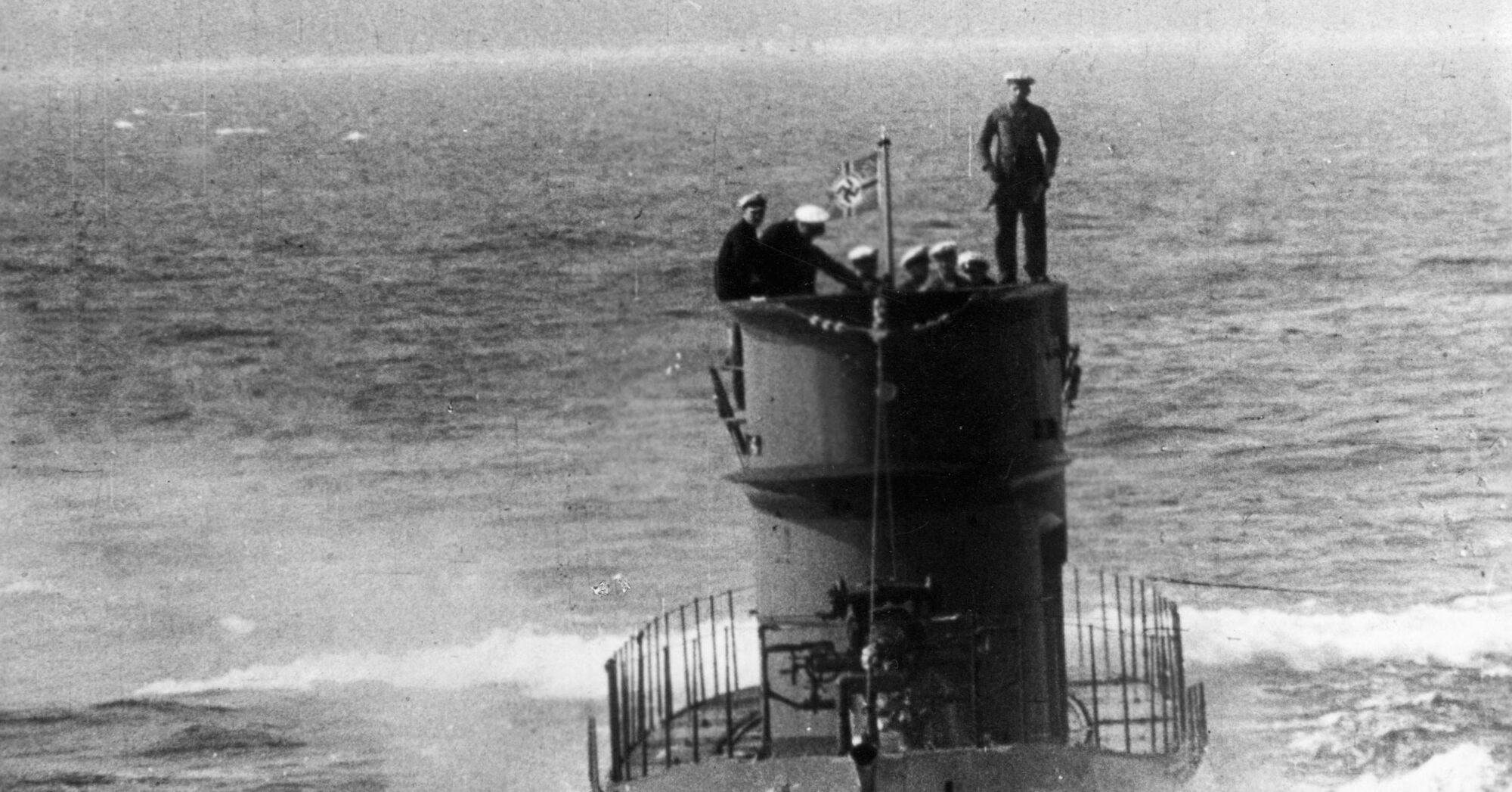
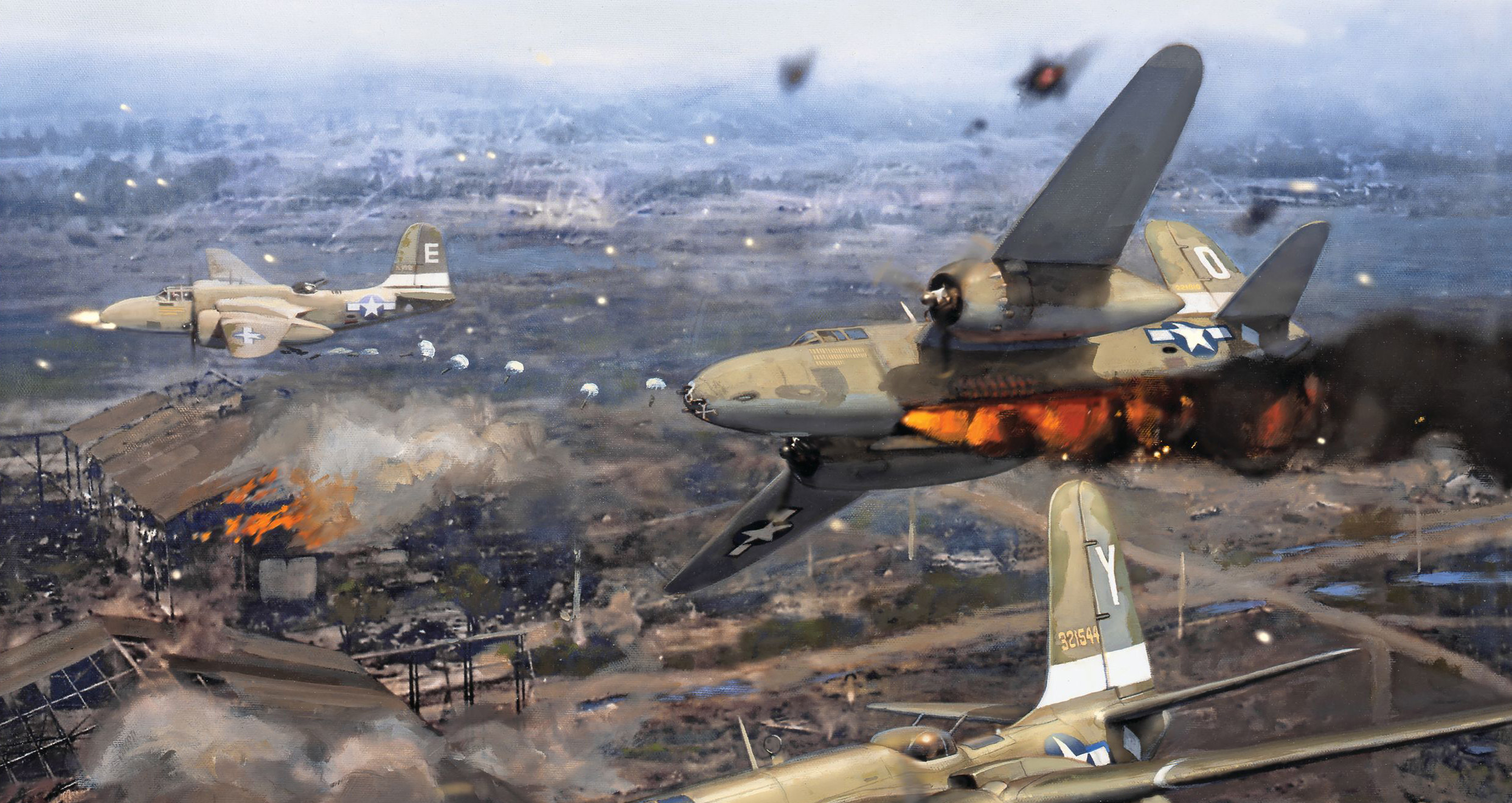
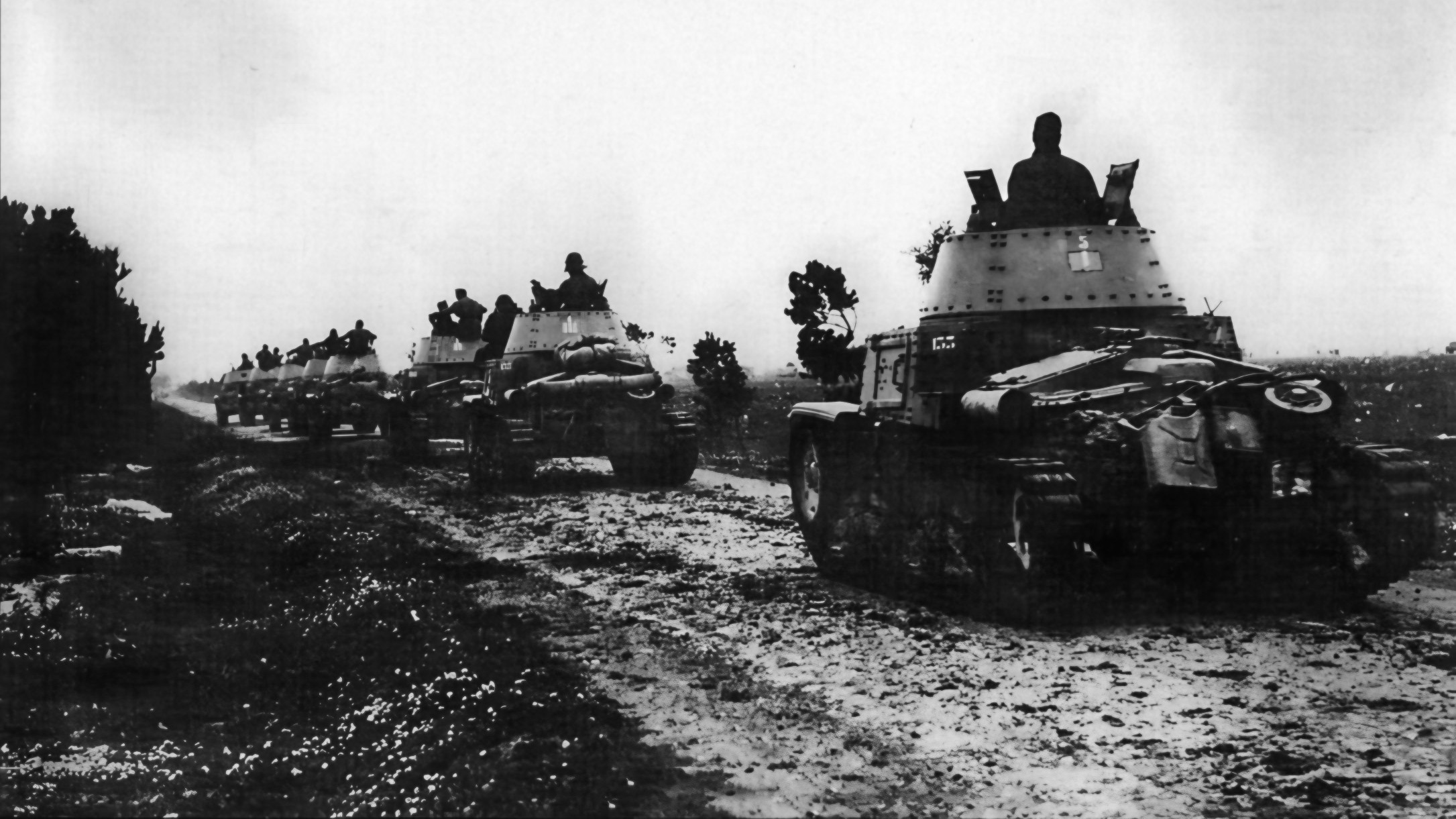
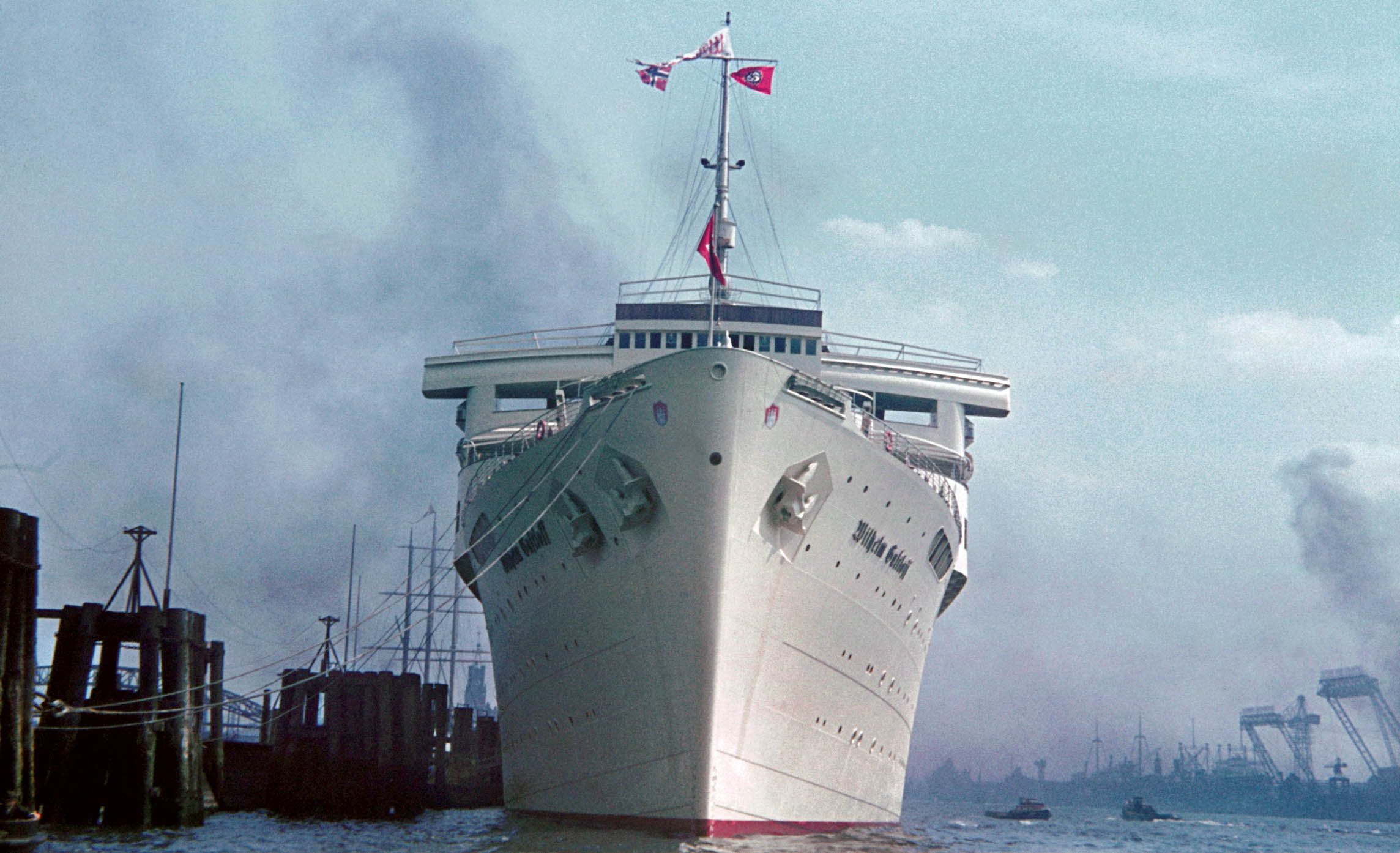
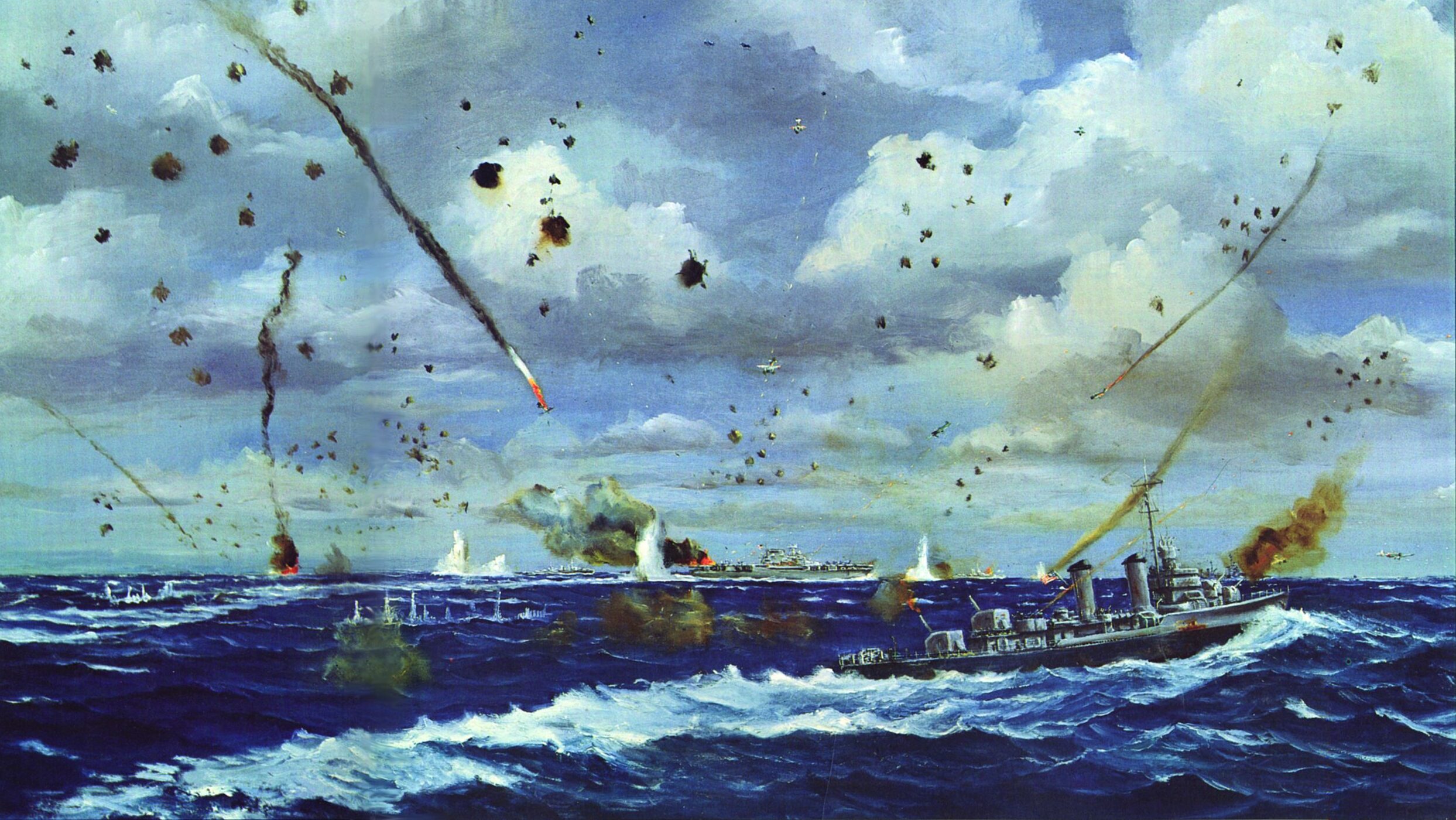
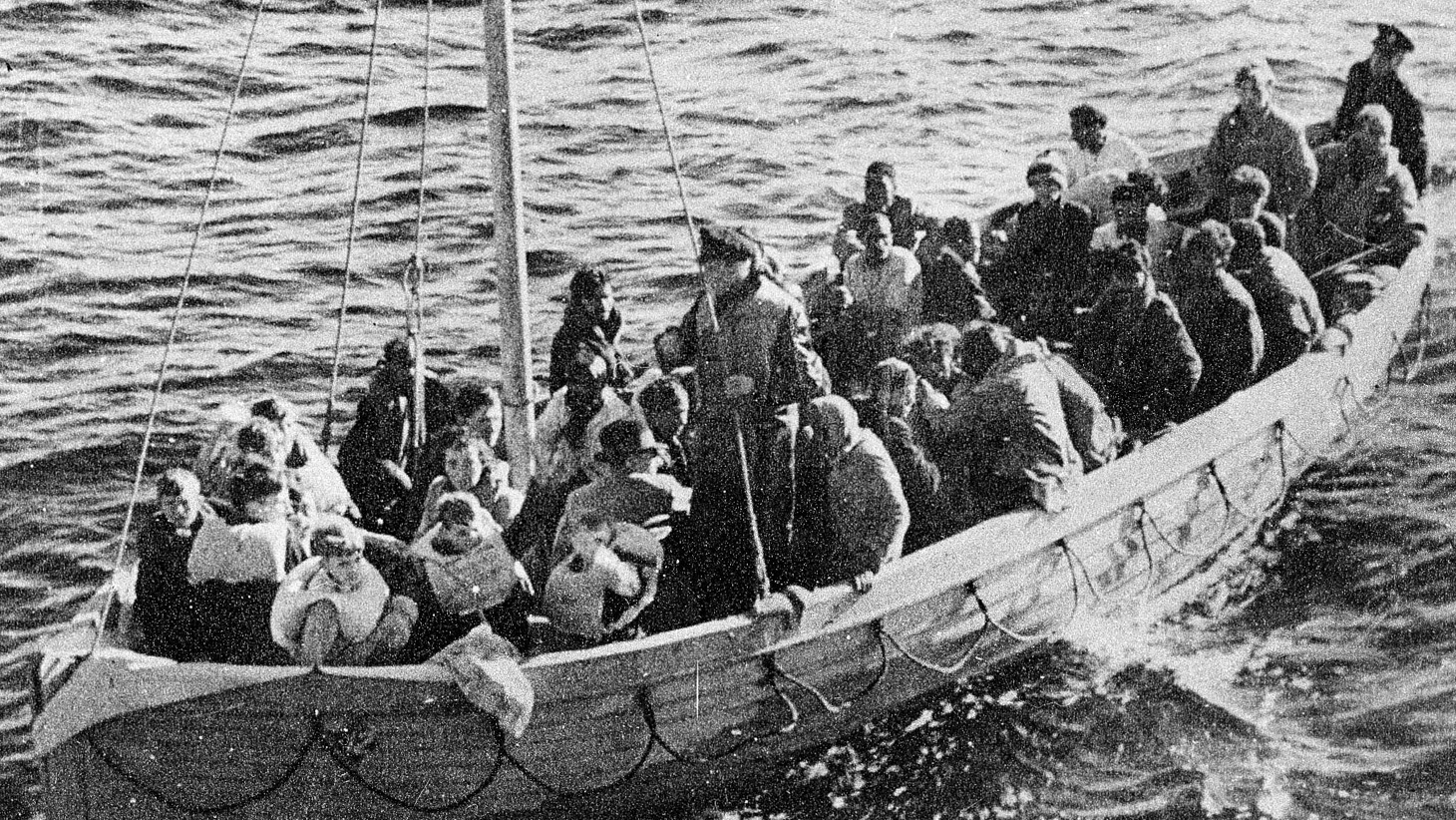
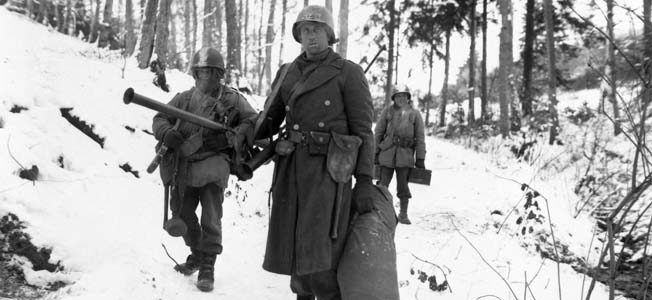
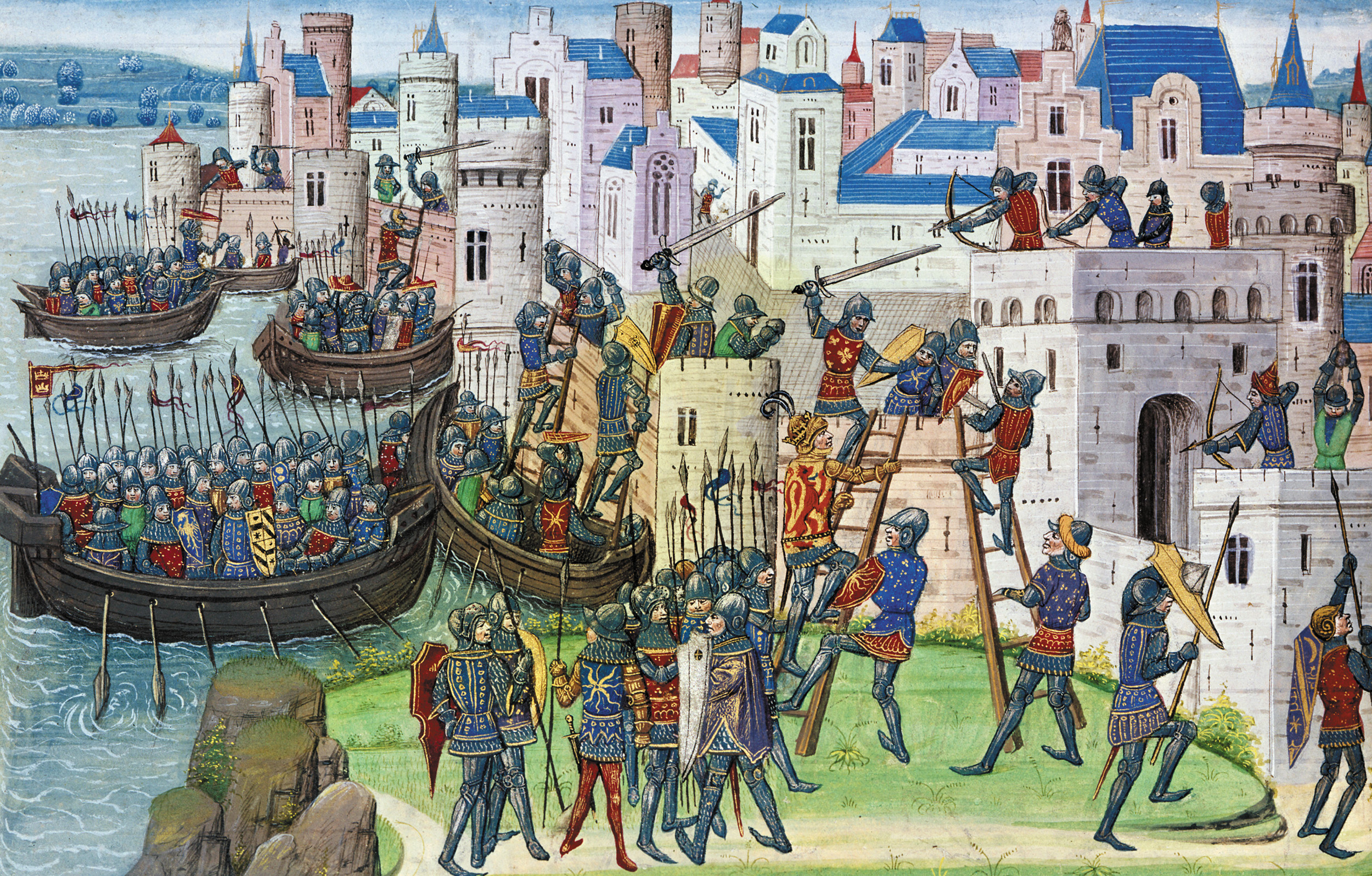
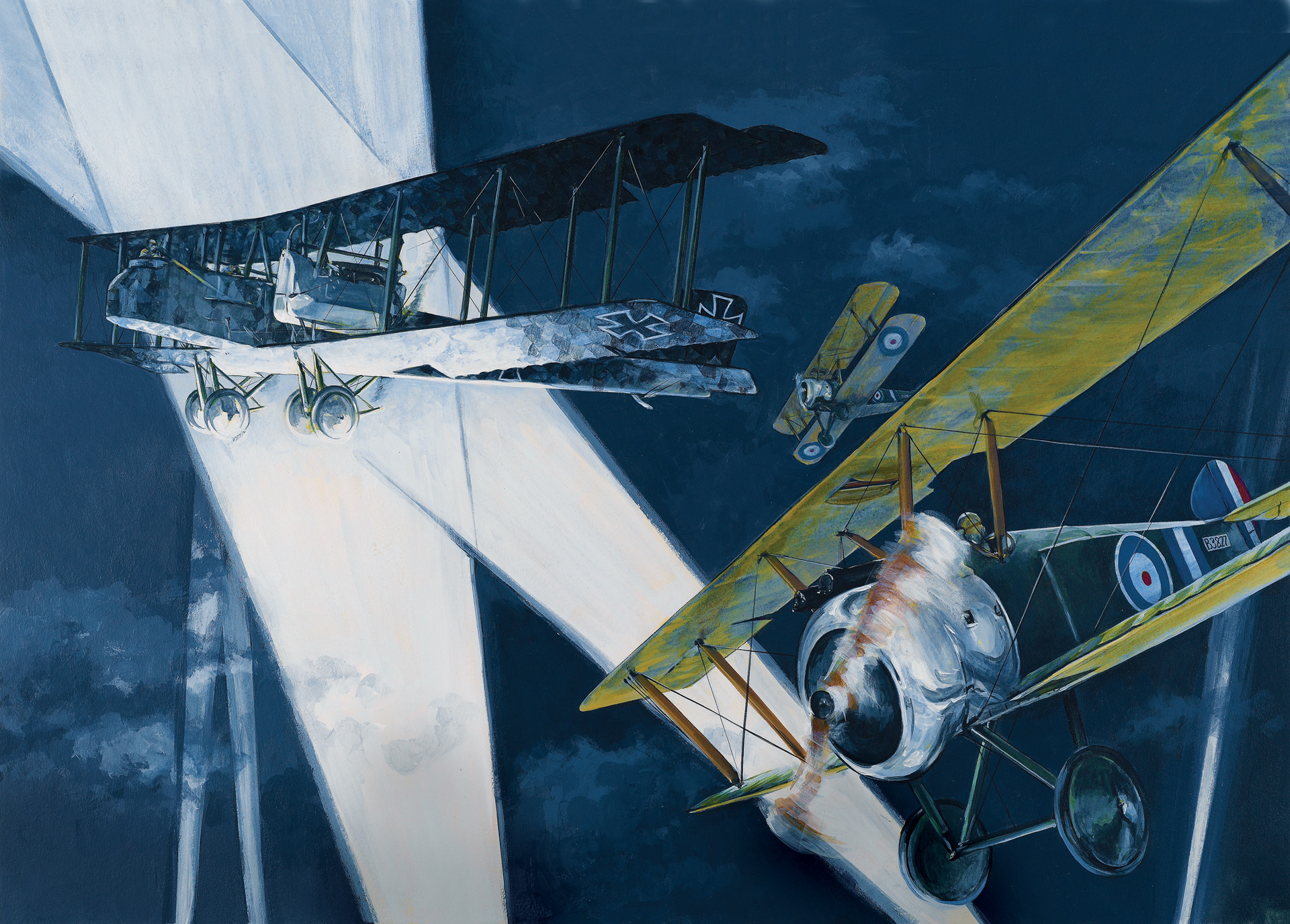
Join The Conversation
Comments
View All Comments